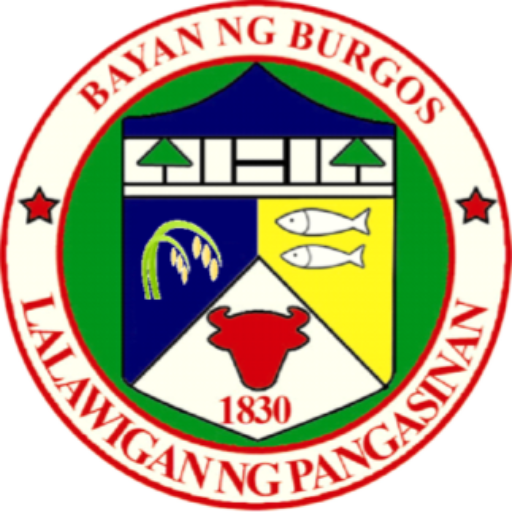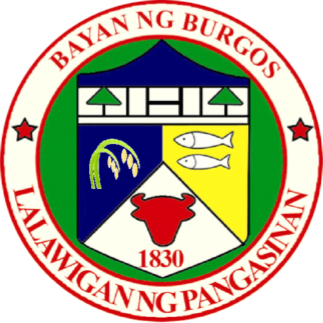Burgos falls under Type 1 climate classification with two pronounced seasonal variation, the wet and dry seasons. The dry season covers November to April while the wet season covers May to October. From June to October, the prevailing winds blow from the southwest, travelling northward and westward.Average temperature is 29.0 degrees centigrade; humidity averages 88.0% and average monthly rainfall is 164 millimeters.The temperature varies with March to as the warmest months and December to February as the coldest months.
Based on PAGASA climate projections in the Philippines, the values of seasonal temperature and seasonal rainfall in 2020 and 2050 are estimated as: (1) DJF mean temperature = 26.7, (2) DJF Rainfall = 29.9mm, (3) Number of days with Tmax>35 degrees during the 2006-2035 period centered at 2020= 2,265 days, (4) Number of dry days during the 2006-2035 period centered at 2020 = 6,443 days, (5) Number of days with rainfall>300mm during the 2006-2035 period centered at 2020 = 13 days.
Burgos falls under Type 1 climate classification with two pronounced seasonal variation, the wet and dry seasons. The dry season covers November to April while the wet season covers May to October. From June to October, the prevailing winds blow from the southwest, travelling northward and westward.Average temperature is 29.0 degrees centigrade; humidity averages 88.0% and average monthly rainfall is 164 millimeters.The temperature varies with March to as the warmest months and December to February as the coldest months.
Based on PAGASA climate projections in the Philippines, the values of seasonal temperature and seasonal rainfall in 2020 and 2050 are estimated as: (1) DJF mean temperature = 26.7, (2) DJF Rainfall = 29.9mm, (3) Number of days with Tmax>35 degrees during the 2006-2035 period centered at 2020= 2,265 days, (4) Number of dry days during the 2006-2035 period centered at 2020 = 6,443 days, (5) Number of days with rainfall>300mm during the 2006-2035 period centered at 2020 = 13 days.
1. Risk Profile
The areas along water bodies in the municipality constitute the natural risk areas of the municipality. These areas experience some flooding during the rainy season. Soil erosion along these areasis also observed. The agro-forest areas also constitute environmental critical areas in the municipality and therefore have to be protected from unregulated interventions.
High risks for the municipality are the typhoons. All the barangays especially those located in coasts are at risks. Since many of the houses in the municipality are made of light materials, these structures are placed at great risk of damage during typhoons. Stronger typhoons now visit the municipality are also expected to be so because of climate change. In as much as Burgos also has a coastline, tsunami risk may also be considered. The municipality still needs to develop tsunami as well as an earthquake emergency operations plan. The El Nino phenomenon also constitutes a risk for Burgos. Farms engaged in rain-fed farming are very dependent on ample rain. With irregular rains, more irrigation facilities or water impounding systems are needed. Prolonged monsoon winds as a result of climate change are another risk area for the municipality.
Natural disasters including floods, tropical cyclone, droughts brought by climate change which confront the municipality challenge agriculture production. Agricultural impacts from natural events and disasters most commonly include: contamination of water bodies, loss of harvest or livestock, increased susceptibility to disease and destruction of irrigation systems and other agricultural infrastructure. These could have long lasting effects on agricultural crops, forest growth. According to the flood map of the region, the agricultural areas in the locality are categorized as being moderately susceptible to flooding. Risk estimation and Vulnerability Assessment places the entire agricultural land of the municipality in low susceptibility to flooding and are projected as low risk areas.
2. Disaster Prevention and Mitigation
The evaluation of risk areas in the barangays is still low in Burgos. Nevertheless, advocacy for disaster risk reduction and management is high. Risk vulnerabilities should be assessed so as to properly plan out disaster risks. Programs and activities for disaster prevention can include carrying out of tree planting activities, repair of drainage canals, conduct of risk assessment and disaster management training, provision climate resistant crops or seeds, use of scientific farming methods and the procurement of garbage collection equipment.
3. Disaster Preparedness
The municipality has prioritized the procurement of the necessary equipment for rescue operations. Easy access to relief goods and medicines are also given attention. Programs and activities for disaster preparedness should include the training of DRRM personnel, procurement of necessary equipment including safety gear, rescue operation equipment, maintenance of marker buoys, management of support and for fisher folks, orientation of persons in the barangays on safety awareness, orientation of disaster volunteers and the gathering of relief goods and first aid medicines.
4. Disaster Response and Disaster Rehabilitation and Recovery
Programs in this aspect include identifying alternative livelihood support for the residents, management of appropriate relief to disaster victims based on consolidation of their needs, establishing proper evacuation centers, conducting medical consultations and nutritional assessment, conducting water quality assessment and road clearing , conducting psychological programs and stress debriefings. Manpower and materials for rescue operations are available in the municipality but should still be upgraded. Programs for disaster rehabilitation should also focus on reconstruction of damaged infrastructure and public utilities in the shortest time possible.
Climate change and disaster risk policies in the Municipality are assessed as important in the following areas: (1) relief and rehabilitation efforts should be facilitated with the full participation of all sectors, (2) raising of the morale of the affected communities to hasten the return of normalcy in disaster stricken areas should be undertaken, (3) resources of the local government should be mobilized and utilized to their full extent, (4) reforestation should be managed along river banks and identified areas, (5) dredging of water tributaries should be designed, (6) close coordination with the barangay officials to safeguard bodies of water from becoming garbage areas should be fostered.
A local risk reduction plan is being prepared so that the municipality can address risk concerns. The plan should look into the governance of disaster risk reduction programs, risk assessment to review risk prevalence, provision of risk information and early warning designs, education creating a culture of risk preparedness and safety among the population, reduction of vulnerability in the different sectors and preparedness and immediate response to disasters.

